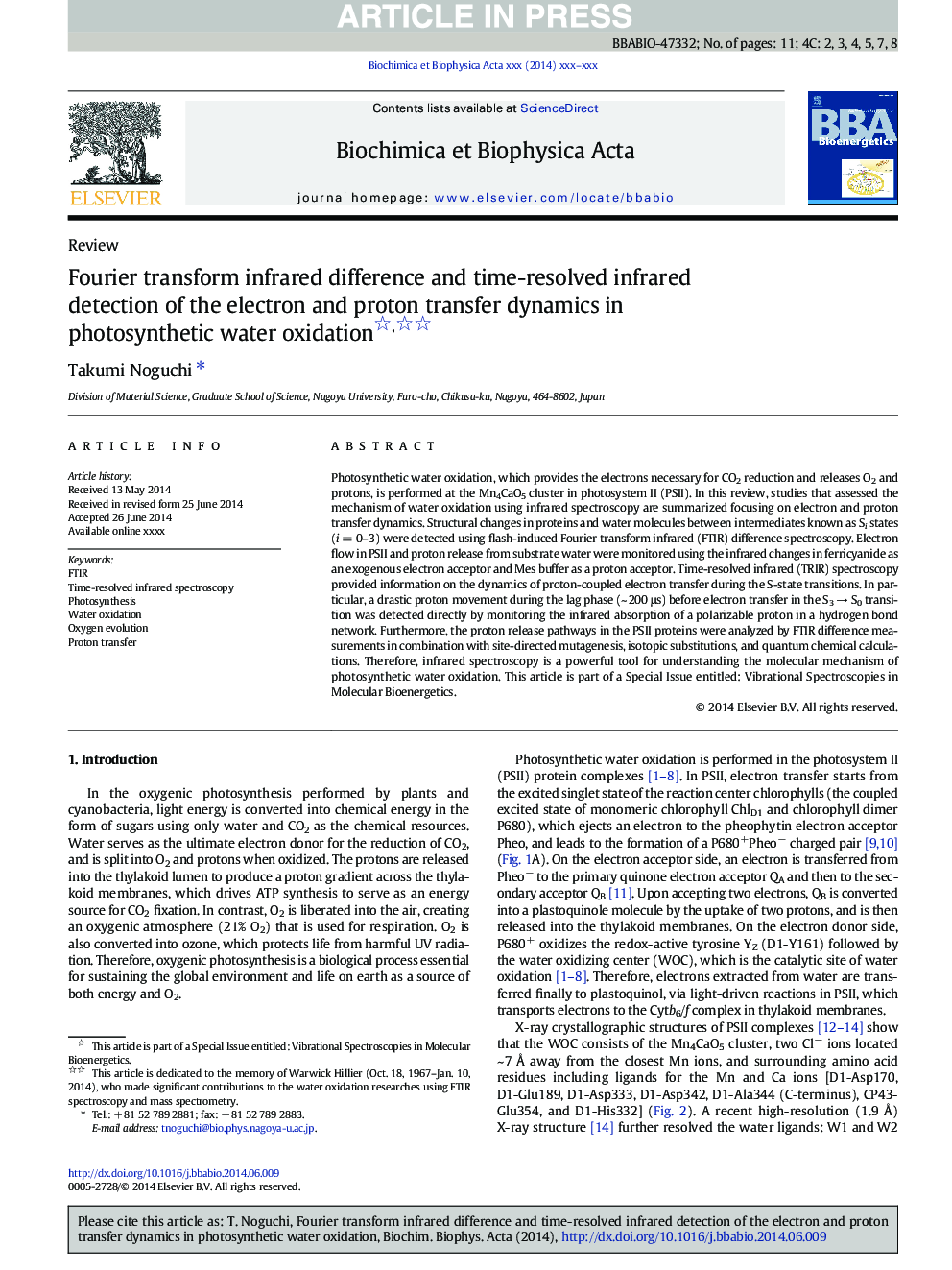| Article ID | Journal | Published Year | Pages | File Type |
|---|---|---|---|---|
| 1942142 | Biochimica et Biophysica Acta (BBA) - Bioenergetics | 2015 | 11 Pages |
Abstract
Photosynthetic water oxidation, which provides the electrons necessary for CO2 reduction and releases O2 and protons, is performed at the Mn4CaO5 cluster in photosystem II (PSII). In this review, studies that assessed the mechanism of water oxidation using infrared spectroscopy are summarized focusing on electron and proton transfer dynamics. Structural changes in proteins and water molecules between intermediates known as Si states (i = 0-3) were detected using flash-induced Fourier transform infrared (FTIR) difference spectroscopy. Electron flow in PSII and proton release from substrate water were monitored using the infrared changes in ferricyanide as an exogenous electron acceptor and Mes buffer as a proton acceptor. Time-resolved infrared (TRIR) spectroscopy provided information on the dynamics of proton-coupled electron transfer during the S-state transitions. In particular, a drastic proton movement during the lag phase (~ 200 μs) before electron transfer in the S3 â S0 transition was detected directly by monitoring the infrared absorption of a polarizable proton in a hydrogen bond network. Furthermore, the proton release pathways in the PSII proteins were analyzed by FTIR difference measurements in combination with site-directed mutagenesis, isotopic substitutions, and quantum chemical calculations. Therefore, infrared spectroscopy is a powerful tool for understanding the molecular mechanism of photosynthetic water oxidation. This article is part of a Special Issue entitled: Vibrational spectroscopies and bioenergetic systems.
Keywords
Related Topics
Life Sciences
Agricultural and Biological Sciences
Plant Science
Authors
Takumi Noguchi,
